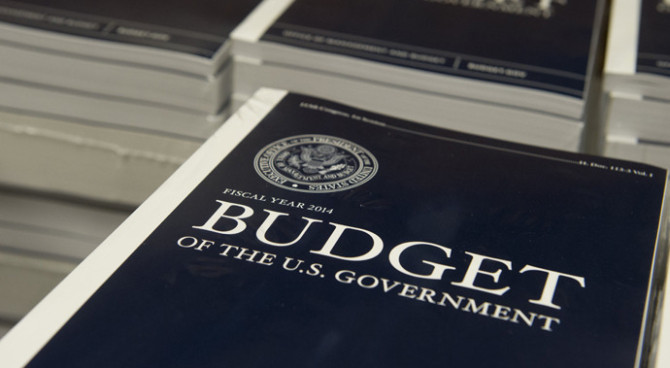In this era of partisan gridlock, any legislative proposal with significant bipartisan sponsorship should be praised and supported if it simply does not produce a policy worse than the status quo. Given current U.S. housing policy, that’s a six-inch hurdle.
Yet by politicizing the allocation of mortgage credit beyond the level that was possible with Freddie and Fannie—and using a new Federal Mortgage Insurance Corporation to force borrowers with good credit to subsidize those with bad credit—the bill proposed by Sen. Tim Johnson (D., S.D.) and Sen. Mike Crapo (R., Idaho) manages to make the affordable-housing provisions of current policy worse.
Under Johnson-Crapo, housing financial reform is held hostage to the political allocation of housing credit. In establishing the Federal Mortgage Insurance Corporation (FMIC), the bill broadens affordable-housing goals by requiring “equitable access” to mortgage credit for all eligible borrowers.
An “eligible borrower” is someone who meets the standards for a loan under the qualified-mortgage standard promulgated by the Consumer Financial Protection Bureau under Dodd-Frank. In an August 2013 proposal for a new risk-retention rule, six federal agencies noted that mortgages meeting the qualified-mortgage standard had a 23% default or serious delinquency rate between 2005 and 2008. Even Fannie and Freddie were never forced to set their mortgage standards that low.
Johnson-Crapo imposes an affordable-housing fee on the private securitizers who obtain federal guarantees for the mortgage-backed securities they issue. The FMIC collects these fees annually on the outstanding principal balance of all securitized mortgage loans it insures, and these fees will be passed on to the borrower.
The fees will be set based on the FMIC’s assessment of how well each firm is serving the “underserved.” Those judged to be meeting the needs of the underserved may pay as little as half the fees paid by other securitizers. In addition, some of the funds collected by the fee could be given to those judged by the FMIC to be performing “well,” further incentivizing subprime lending and discouraging prime lending.
The fee will average 10 basis points annually on all outstanding mortgage balances, or about $5,800 over the life of a $300,000, 30-year mortgage. The ability to subsidize favored securitizers and penalize those who are not allocating sufficient capital to borrowers deemed to be “underserved” gives the FMIC the power to force mortgage lenders to follow a political allocation of mortgage credit. This is a level of control that was never achieved even at the peak of affordable-housing goals set by the Department of Housing and Urban Development prior to the financial crisis and is beyond anything that Federal Housing Finance Agency director Mel Watt could impose under existing law.
Amazingly, the billions of dollars collected annually through these fees will not be earmarked for subsidized mortgages for low-income Americans. A significant amount will go to advocacy groups that pressure lenders to make subprime loans, creating what will almost certainly be the largest community-action slush fund in American history.
Under the bill, low-risk, prime borrowers will be forced to pay far more than the true cost of their mortgage insurance so that subprime borrowers, who defaulted five times more often than prime borrowers during the financial crisis, can pay far less than the actual cost of their insurance. Securitizers that cater to subprime borrowers will face much lower affordable-housing fees while securitizers that make prime loans will pay higher fees and in turn charge more to their prime borrowers. As the ratio of prime to subprime loans falls, the cost of insuring securitized mortgages will rise, further penalizing prime borrowers.
The resulting system, like ObamaCare, is rigged against the low-risk borrower. With ObamaCare being so unpopular, why would we want to use its redistribution system in the housing market?
A standard political argument for the federal guarantee of mortgage-backed securities is to help people who play by the rules and behave responsibly to obtain affordable 30-year, fixed-rate mortgages. But a close reading of Johnson-Crapo’s 442 pages makes it clear that much of the gain to the responsible, low-risk borrower coming from federal guarantees is taken away by a parasitic system in which the prime borrower overpays to fund subprime mortgages and community action groups.
If Congress wants to subsidize affordable housing it should authorize a subsidy program and fund it through appropriations instead of using housing finance as a slush fund. A transparent program to subsidize low-income housing might be a reasonable price to pay for a sound housing market that doesn’t contain the seeds of another financial crisis and doesn’t exploit prime borrowers through a program the public doesn’t understand.
Johnson-Crapo does kill Freddie and Fannie and affordable-housing goals, but it replaces them with a system that is dangerous to the economy and that exploits credit-worthy families seeking prime loans. Senators who don’t want a replay of the financial crisis should consider converting the affordable-housing provisions of Johnson-Crapo into an authorization to subsidize low-income housing. The debate could then focus, as it should, on safety and soundness protections and whether a federal loan guarantee is necessary. The outcome could be a better housing-finance system for America.
Mr. Gramm, a former chairman of the Senate Banking Committee, is senior partner of U.S. Policy Metrics and a visiting scholar at American Enterprise Institute. Mr. Wallison is a fellow at AEI.



